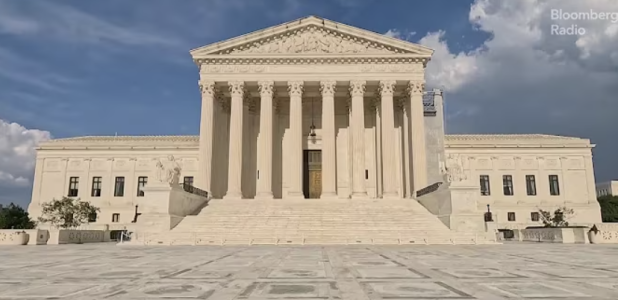How Trump’s Supreme Court picks are quietly reshaping government policy—here’s what to watch
By
Veronica E.
- Replies 0
You’ve probably heard that President Donald Trump appointed three justices to the Supreme Court.
What you may not know is how those appointments are quietly influencing the rest of the government—and how a legal tool known as the “emergency docket” is playing a much bigger role than it used to.
This process allows the Court to make quick, often unexplained decisions that can have sweeping effects on public policy.
While this tool existed long before Trump’s presidency, its use has expanded significantly in recent years, sometimes allowing policies to take effect before they receive full legal review.
For older Americans interested in how the system of checks and balances is evolving, this trend is worth paying attention to.
Let’s break down what the emergency docket is, how it’s being used, and what it means for the future of government.

The emergency docket: What it is and how it's changed
President Trump appointed Justices Neil Gorsuch, Brett Kavanaugh, and Amy Coney Barrett—moves that have shifted the Court’s balance toward a conservative majority.
With that majority in place, the Trump administration began using the emergency docket (sometimes called the “shadow docket”) to fast-track policy changes that might otherwise have stalled in lower courts.
Historically, the emergency docket was reserved for time-sensitive matters such as last-minute death penalty appeals or national security concerns.
In this administration, however, it has been used more frequently to address major policy issues without the full process of oral arguments or written opinions.
Also read: Supreme Court decision clears way for massive federal workforce shake-up
What kinds of decisions are being made?
Several high-profile policies have been implemented or upheld through this method.
These include:
In many of these cases, the Court allowed the policies to take effect without issuing detailed legal explanations.
This limited visibility into the Court’s reasoning has prompted questions from legal experts and members of the public.
Also read: Supreme Court takes up case involving birthright citizenship and executive powers
Why use the emergency docket?
Supporters of this approach say it’s a response to political gridlock.
According to officials close to the Trump administration, the docket helped them bypass lower courts that were blocking controversial policies.
By going straight to the Supreme Court, they could get quicker decisions.
David Warrington, who served as Trump’s personal attorney and later a top White House lawyer, stated that the team worked "around the clock to advance his agenda"—and that included using every legal tool available.
Also read: A Supreme Court just replaced its news anchors... with AI?
Why critics are concerned
Not everyone agrees with this strategy.
Justice Sonia Sotomayor has voiced concern, arguing that the judiciary should serve as a check on power—not a shortcut for fast policy changes.
Other critics say using the emergency docket in this way undermines transparency and public trust.
Stanford law professor Pamela Karlan called the trend “not normal,” while Justice Ketanji Brown Jackson warned it could damage respect for lower courts and the rule of law.
Critics argue that rushing through decisions without public explanation risks weakening the credibility of the nation’s highest court.
Also read: Is your mail at risk? Supreme Court to review USPS over delivery discrimination claims
The problem of reversing course
Even if the Court eventually hears these cases in full and decides against the policies, some damage may already be done.
Alicia Bannon of NYU’s Brennan Center for Justice explained, “Once those firings have moved forward, once that department has been effectively obliterated, you can’t just… bring us back to the status quo.”
In other words, the Court’s emergency decisions can reshape policy in ways that aren’t easily undone—even if those policies are later ruled unlawful.
Also read: Could your phone and internet bills drop? Supreme Court weighs $8 billion program
What could happen next
The emergency docket isn’t likely to disappear anytime soon.
Future presidents, regardless of political party, may continue using it to advance their agendas quickly.
As long as the Supreme Court signals a willingness to accept these urgent appeals, the balance of power between the branches of government may continue to shift.
For those who care about government accountability, this trend invites ongoing scrutiny.
How you can stay engaged
The Supreme Court has always played a key role in shaping American life.
But how it’s being used today is changing—often out of public view.
Whether you see this shift as a needed evolution or a troubling shortcut, one thing is certain: the rules of government are being rewritten in real time, and it’s happening faster than many expected.
Read next: Wisconsin Supreme Court’s decision: The legal battle involving Elon Musk

Is the Supreme Court’s emergency docket a practical tool for urgent decisions, or does it risk bypassing important checks and balances? Have you felt the effects of these decisions in your own life or community? We’d love to hear your thoughts—join the conversation in the comments below.
What you may not know is how those appointments are quietly influencing the rest of the government—and how a legal tool known as the “emergency docket” is playing a much bigger role than it used to.
This process allows the Court to make quick, often unexplained decisions that can have sweeping effects on public policy.
While this tool existed long before Trump’s presidency, its use has expanded significantly in recent years, sometimes allowing policies to take effect before they receive full legal review.
For older Americans interested in how the system of checks and balances is evolving, this trend is worth paying attention to.
Let’s break down what the emergency docket is, how it’s being used, and what it means for the future of government.

The Supreme Court’s use of the emergency docket has drawn increased attention, as major policy decisions are made without full briefings or public explanation. Image Source: YouTube / Bloomberg Podcasts.
The emergency docket: What it is and how it's changed
President Trump appointed Justices Neil Gorsuch, Brett Kavanaugh, and Amy Coney Barrett—moves that have shifted the Court’s balance toward a conservative majority.
With that majority in place, the Trump administration began using the emergency docket (sometimes called the “shadow docket”) to fast-track policy changes that might otherwise have stalled in lower courts.
Historically, the emergency docket was reserved for time-sensitive matters such as last-minute death penalty appeals or national security concerns.
In this administration, however, it has been used more frequently to address major policy issues without the full process of oral arguments or written opinions.
Also read: Supreme Court decision clears way for massive federal workforce shake-up
What kinds of decisions are being made?
Several high-profile policies have been implemented or upheld through this method.
These include:
- Modifying legal protections for certain immigrant groups
- Authorizing the termination of thousands of federal employees
- Reversing policies related to transgender service members in the military
- Facilitating leadership changes at independent government agencies
- Allowing structural changes to the Department of Education, including workforce reductions affecting nearly 1,400 employees
In many of these cases, the Court allowed the policies to take effect without issuing detailed legal explanations.
This limited visibility into the Court’s reasoning has prompted questions from legal experts and members of the public.
Also read: Supreme Court takes up case involving birthright citizenship and executive powers
Why use the emergency docket?
Supporters of this approach say it’s a response to political gridlock.
According to officials close to the Trump administration, the docket helped them bypass lower courts that were blocking controversial policies.
By going straight to the Supreme Court, they could get quicker decisions.
David Warrington, who served as Trump’s personal attorney and later a top White House lawyer, stated that the team worked "around the clock to advance his agenda"—and that included using every legal tool available.
Also read: A Supreme Court just replaced its news anchors... with AI?
Why critics are concerned
Not everyone agrees with this strategy.
Justice Sonia Sotomayor has voiced concern, arguing that the judiciary should serve as a check on power—not a shortcut for fast policy changes.
Other critics say using the emergency docket in this way undermines transparency and public trust.
Stanford law professor Pamela Karlan called the trend “not normal,” while Justice Ketanji Brown Jackson warned it could damage respect for lower courts and the rule of law.
Critics argue that rushing through decisions without public explanation risks weakening the credibility of the nation’s highest court.
Also read: Is your mail at risk? Supreme Court to review USPS over delivery discrimination claims
The problem of reversing course
Even if the Court eventually hears these cases in full and decides against the policies, some damage may already be done.
Alicia Bannon of NYU’s Brennan Center for Justice explained, “Once those firings have moved forward, once that department has been effectively obliterated, you can’t just… bring us back to the status quo.”
In other words, the Court’s emergency decisions can reshape policy in ways that aren’t easily undone—even if those policies are later ruled unlawful.
Also read: Could your phone and internet bills drop? Supreme Court weighs $8 billion program
What could happen next
The emergency docket isn’t likely to disappear anytime soon.
Future presidents, regardless of political party, may continue using it to advance their agendas quickly.
As long as the Supreme Court signals a willingness to accept these urgent appeals, the balance of power between the branches of government may continue to shift.
For those who care about government accountability, this trend invites ongoing scrutiny.
How you can stay engaged
- Stay informed. Understanding how the Court operates makes it easier to follow national developments.
- Discuss the issue. Bring it up with friends or family—these conversations help create awareness.
- Share your view. Have thoughts on how the emergency docket is being used? We’d love to hear from you.
The Supreme Court has always played a key role in shaping American life.
But how it’s being used today is changing—often out of public view.
Whether you see this shift as a needed evolution or a troubling shortcut, one thing is certain: the rules of government are being rewritten in real time, and it’s happening faster than many expected.
Read next: Wisconsin Supreme Court’s decision: The legal battle involving Elon Musk
Key Takeaways
- The Trump administration frequently used emergency appeals to the Supreme Court, accelerating major policy changes through a fast-track legal process.
- The conservative-majority Court, including Trump’s three appointees, approved several controversial actions without full legal briefings or public rationale.
- Critics argue this process weakens legal norms and transparency, allowing significant changes to take effect before proper review.
- Justices like Sotomayor and Jackson, along with legal scholars, warn that overusing the emergency docket could undermine public trust and judicial independence.
Is the Supreme Court’s emergency docket a practical tool for urgent decisions, or does it risk bypassing important checks and balances? Have you felt the effects of these decisions in your own life or community? We’d love to hear your thoughts—join the conversation in the comments below.






